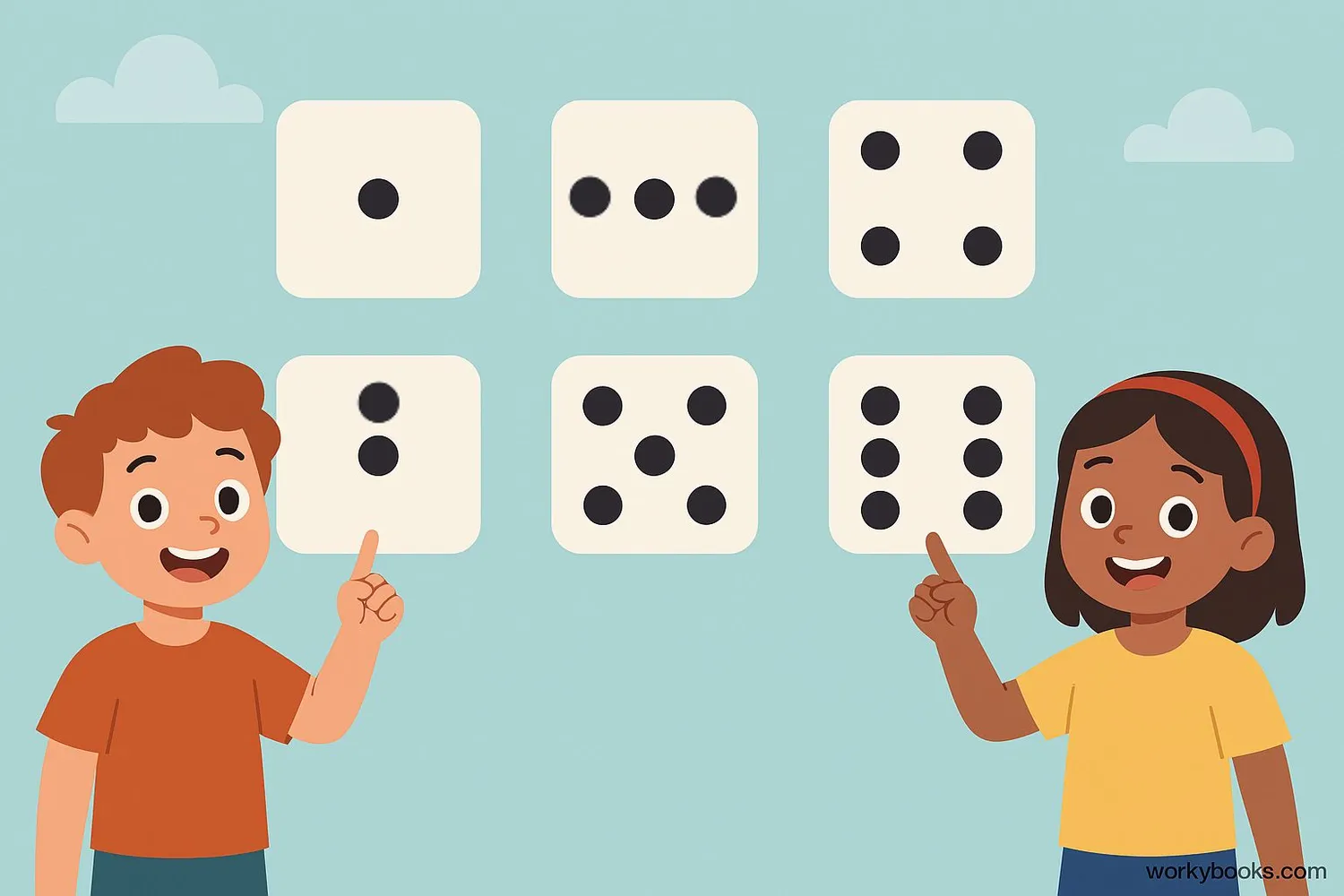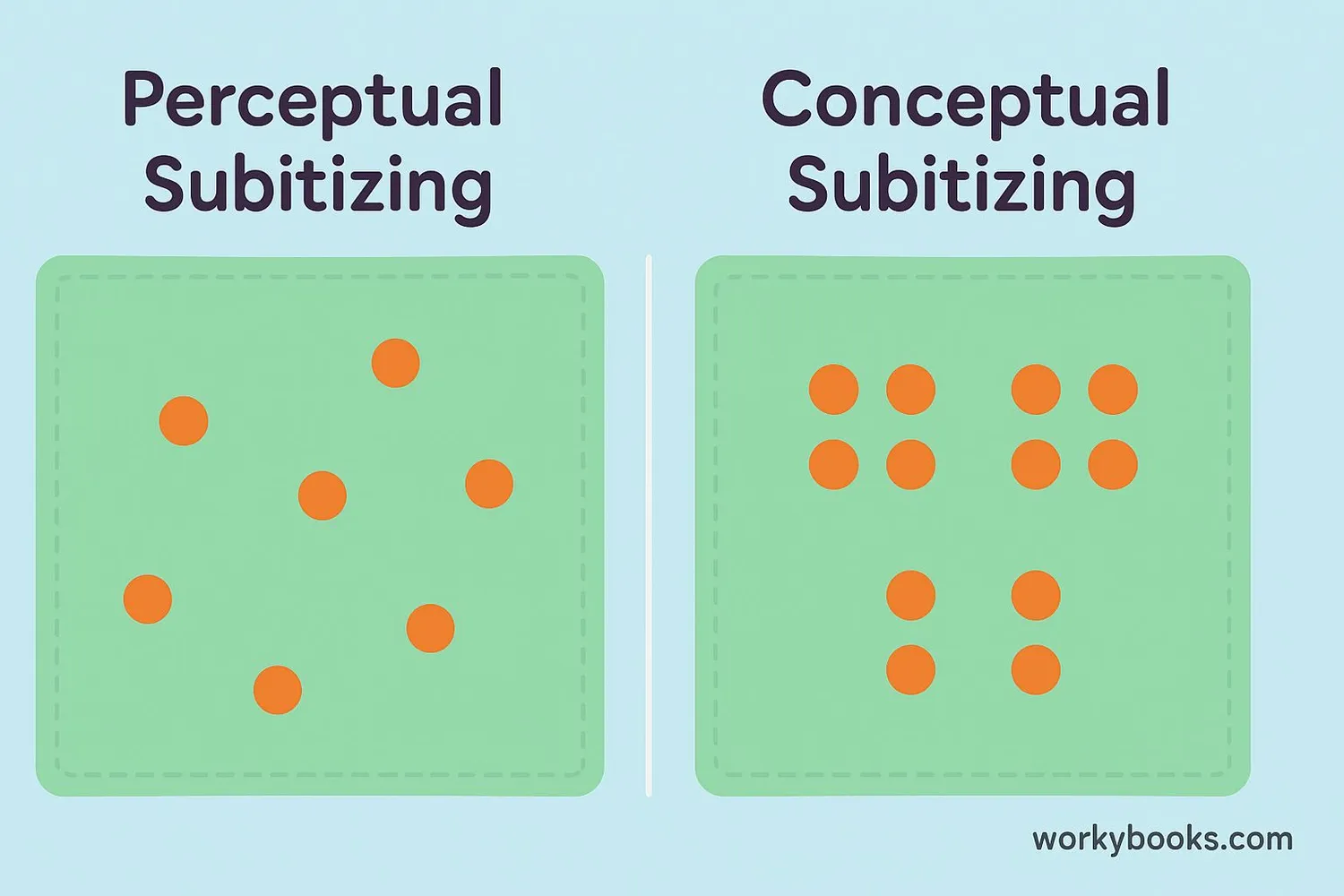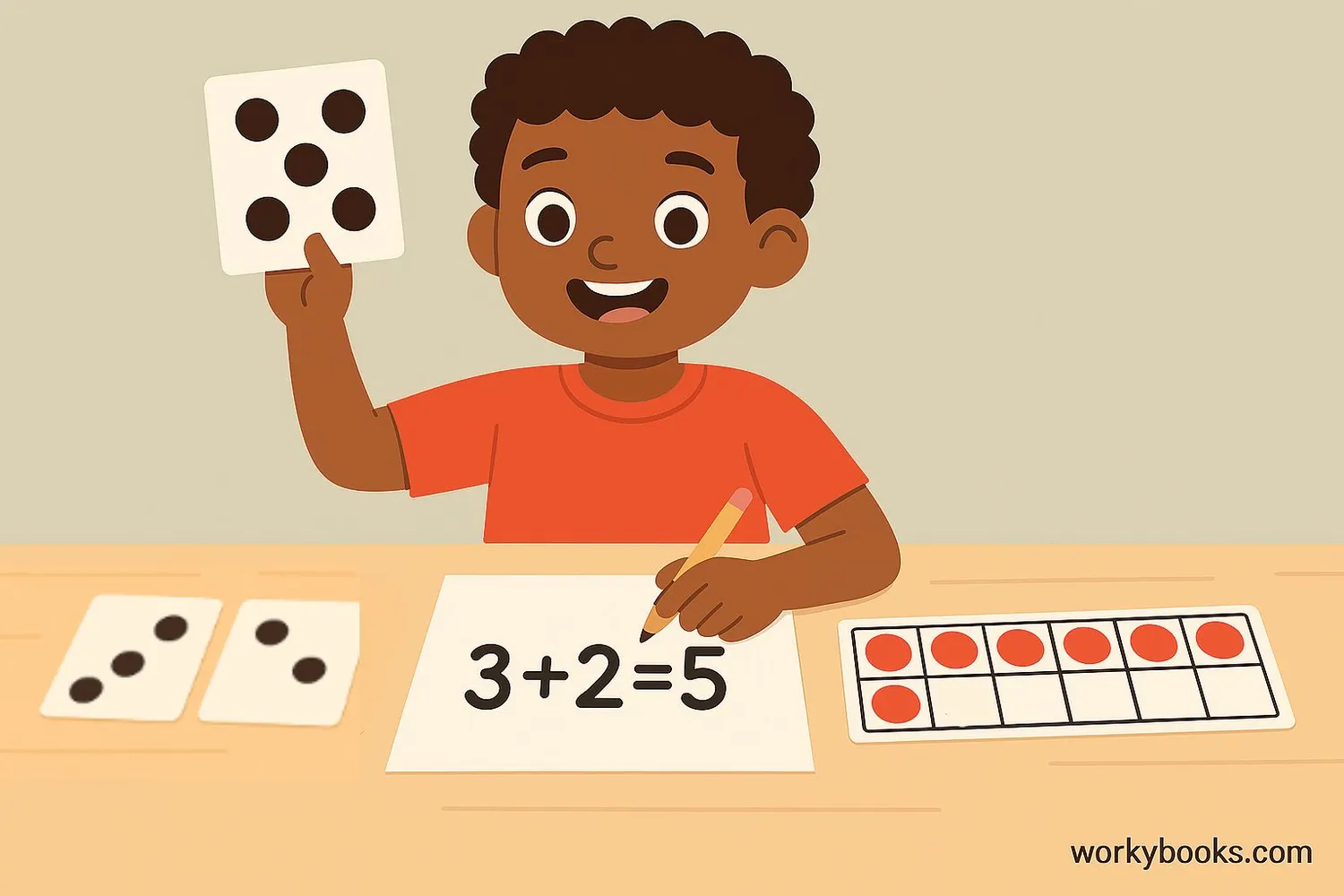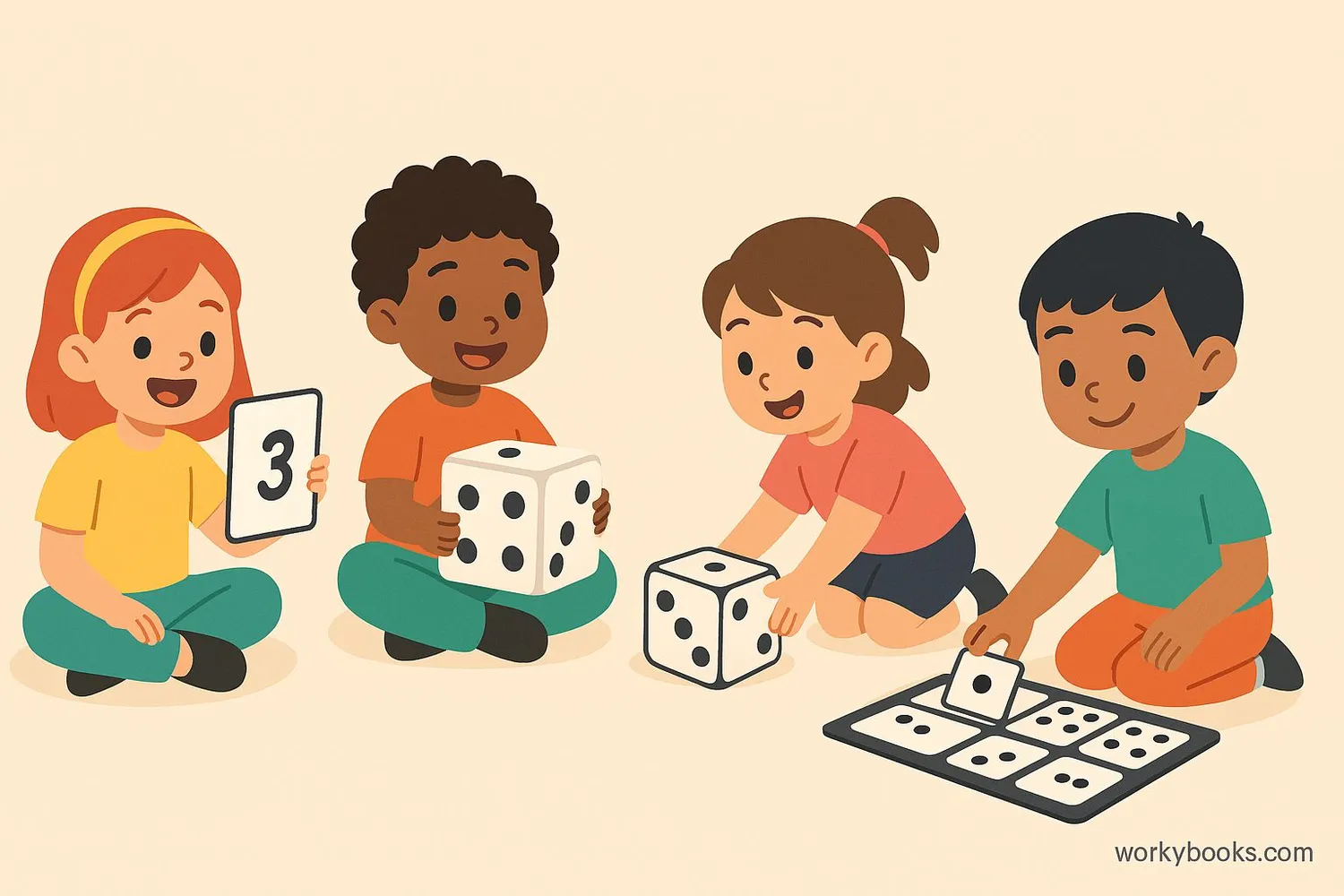What is Subitizing? - Definition, Examples, Quiz, FAQ, Trivia
Learn to instantly recognize quantities without counting - a key math skill for young learners
What is Subitizing?

Subitizing is the ability to instantly recognize how many items are in a small group without counting them one by one. The word comes from the Latin "subitus" meaning "sudden."
When you look at the dots on a die and immediately know it's a six without counting, that's subitizing! This skill develops naturally in young children and is an important foundation for math learning.
Humans can typically subitize groups of 1-5 items instantly. With practice, we can learn to recognize larger patterns too. Subitizing helps us develop number sense - our understanding of what numbers mean and how they relate to each other.
Key Concept
Subitizing is about recognizing quantities instantly without counting - like knowing how many fingers you're holding up without counting them.
Types of Subitizing

There are two main types of subitizing that help us recognize quantities:
Perceptual Subitizing
Instantly recognizing small quantities (up to 5) without any mental processing. This is the kind we use when recognizing dice patterns.
Conceptual Subitizing
Recognizing larger quantities by seeing patterns and groupings. For example, seeing two groups of three and knowing it's six.
Remember
Perceptual subitizing is immediate recognition, while conceptual subitizing uses patterns and groupings to understand larger quantities.
Why Subitizing is Important

Subitizing is a fundamental math skill that helps children:
- Develop number sense: Understanding what numbers represent
- Build mental math skills: Seeing number relationships helps with calculations
- Recognize number patterns: Like those on dice, dominoes, or ten frames
- Understand addition and subtraction: By composing and decomposing numbers
- Estimate quantities: Making reasonable guesses about how many
Research shows that children with strong subitizing skills tend to do better in math throughout their schooling. It's especially important for early math development in preschool and kindergarten.
Did You Know?
Babies as young as 6 months show early subitizing abilities for small quantities!
Subitizing Activities & Games

Here are some effective activities to help children develop subitizing skills:
- Dot Card Flash: Quickly show dot cards and have students say the number
- Ten Frame Activities: Use ten frames to show different quantities
- Subitizing War: Card game where players compare quantities
- Matching Games: Match numerals to dot patterns
- Dice Games: Roll dice and say the number without counting
- Quick Image Games: Briefly show an arrangement of objects
- Number Talks: Discuss different ways to see the same quantity
Start with small numbers (1-5) and gradually increase to larger quantities as children develop conceptual subitizing skills. Keep activities brief and engaging!
Teaching Tip
Start with regular patterns (like dice) before moving to irregular arrangements to build confidence.
Subitizing Examples

Let's look at some common patterns that help with subitizing:
Number 3
Triangle pattern
Number 4
Square pattern
Number 5
Dice pattern
Number 6
Two rows of three
With practice, children learn to recognize these patterns instantly. Other common patterns include finger arrangements, domino patterns, and arrangements on ten frames.
Subitizing Practice Quiz
Test your understanding of subitizing with this 5-question quiz. Choose the correct answer for each question.
Frequently Asked Questions
Here are answers to common questions about subitizing:
Math Trivia
Discover interesting facts about numbers and subitizing:
Ancient Number Sense
Research shows that ancient civilizations used subitizing for basic trading long before formal number systems were developed. Many indigenous cultures still use subitizing-based counting systems today.
Brain Processing
Brain imaging studies show that subitizing activates different areas of the brain than counting does. Subitizing uses the visual processing areas, while counting engages language centers.
Animals Subitize Too!
Many animals including birds, fish, and primates demonstrate subitizing abilities. Studies show chimpanzees can instantly recognize quantities up to 5, similar to young children.
Dice Patterns
The patterns on dice have been designed specifically to support subitizing. The arrangement of dots allows for instant recognition of each number from 1 to 6.





